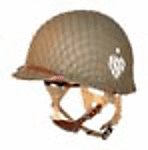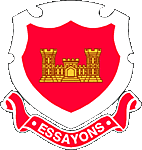@ Keith: Oh yea, this is blazing fast progress for me - less than 3 months now since I started this project!
@ Jerry: Thanks. It is a very simple face painting process, really. Mark Bannerman illustrates and explains it in detail in his Osprey title, "Modelling Panzer Crewmen of the Heer."
Osprey::Modelling Panzer Crewmwn of the Heer The beauty of the technique is starting with the burnt umber wash to establish the dark shadows and then blending the basic flesh into those rather than block-in the shadows individually. It's faster and puts less paint on the face. The basic shading and highlighting can be done very quickly.
In regards to the photos:
I use a simple "point and shoot" Sony Cyber-Shot DSC-T100 camera. I've had the camera for several years, and I don't even think Sony still makes it. It's a pocket-sized camera with only 8.1 megapixels and a 5x optical zoom. Heck, most cell-pone cameras are better than this now...
The main problem with my camera is that the objective lens is quite small which can create radial distortions around the edges of some images. This is usually not an issue unless the subject has long straight lines (like a kit sprue) which can then appear to curve when compared to the straight edges of the image. Generally, it's not a significant problem.
A better camera would be nice for the larger lens (less radial distortion) and higher pixel resolution (with perhaps a higher F-stop and greater depth of field) , but once the images are all crunched and condensed for the web, most of those advantages would be lost. A cheap camera works well enough for me right now.
I do use an inexpensive tripod to hold my camera, and I have an open-topped "light box" made from white foam-core board held together with masking tape (thanks, Wally-World). I don't use any special lights, just the day-light CFLs bulbs in my normal workroom light fixtures.
I set the camera for macro and use the self-timer to automatically click the shutter after the auto focus. No flash. The tripod allows the camera to auto expose for however long it wants and the self-timer allows me to get my hands out of the way.
I have an old copy of Photoshop Elements 3.0 that I bought on sale at Walmart to adjust the shadows and contrast if necessary and to digitally zoom and crop. Digitally zooming and cropping out the excess background (and out of focus areas) around the subject helps make the pictures more interesting and allows more of the subject to be seen.
I then re-size the images, usually to either 640 or 800 pixels on the longest side (with the auto ratio feature enabled to automatically re-size the short side). This drastically reduces the file size as well as the "physical" image size.
I then usually use the "Save for the web" function to re-size the image file since here on Armorama it's pointless to post up huge, multi-megapixel images. The site will not allow them to show any larger than 800 pixels wide. This also makes the pictures faster to up-load to my Photobucket account. Most of my pictures on the forums here are around 640x480 to 800x533 pixels and in the 175-150 Kb or smaller file size range.
For these "studio portraits:"
I used the macro feature on the camera, auto focus, auto exposure, flash off, and the self-timer. The faces have almost no depth of field, so they can be optically zoomed in on quite close and still stay in focus.
I digitally zoomed in on the images in Photoshop, cropped the excess background away, lightened the shadows and increased the mid-tone contrasts slightly, re-sized them to 800 pixels tall (allowing the width ratio to self-adjust) and then "Saved for the web."
The three-view collages were made in Powerpoint just to save me the hassle of up-loading nine images (3 views of 3 heads) to Photobucket and then putting the URLS for nine images into my post. It was just simpler and faster to make the little collages (plus it allowed easy side-by-side comparisons).
Anyways, if I had to say what was the most important part of the process, I'd say it was using the tripod with auto-exposure to compensate for the lighting. I also let the macro and auto-focus do their thing.
HTH,


















































